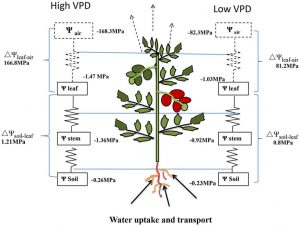11. Transpiration and Root Water Uptake
In the previous chapter we focused on the process of evaporation, which is the first process we have considered in connection with the energy balance at the land surface. We noted that evaporation, as we define it, is distinct from transpiration, which is the vaporization of water from the interior of plants, predominantly exiting through the stomates. In this chapter we will focus on transpiration and the related process of root water uptake. Like evaporation, transpiration is a process that links together the soil water balance and the surface energy balance.


